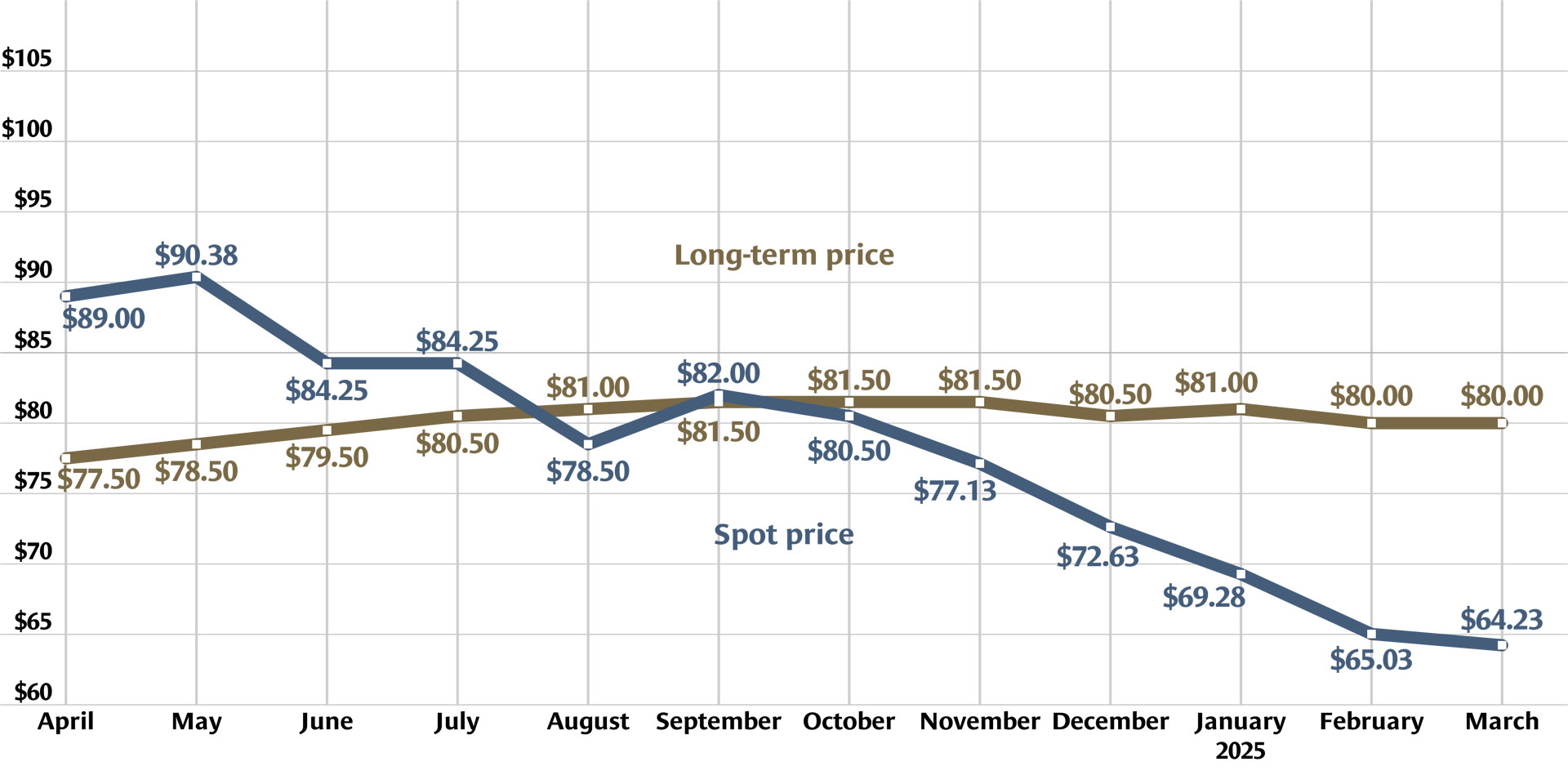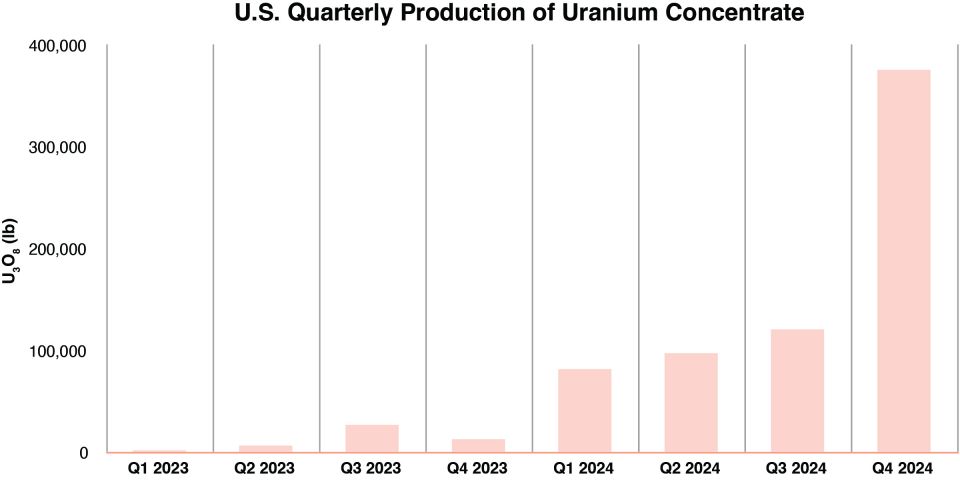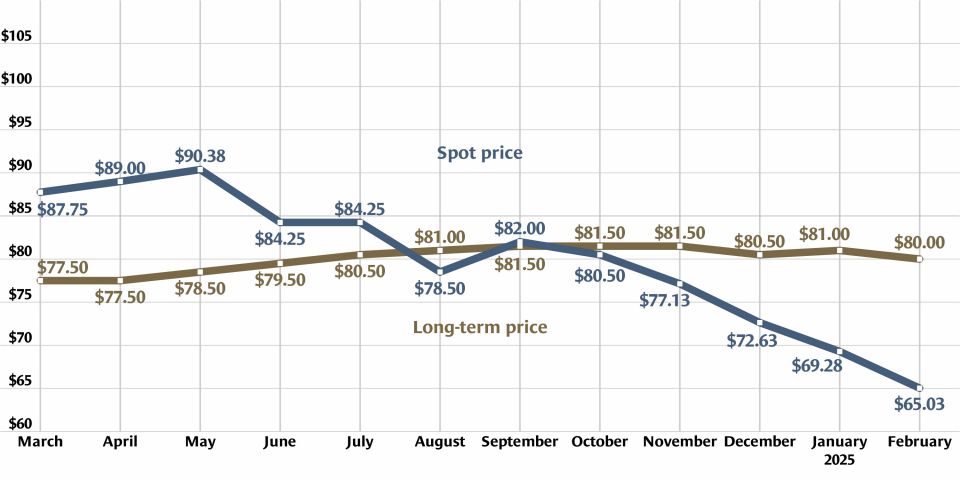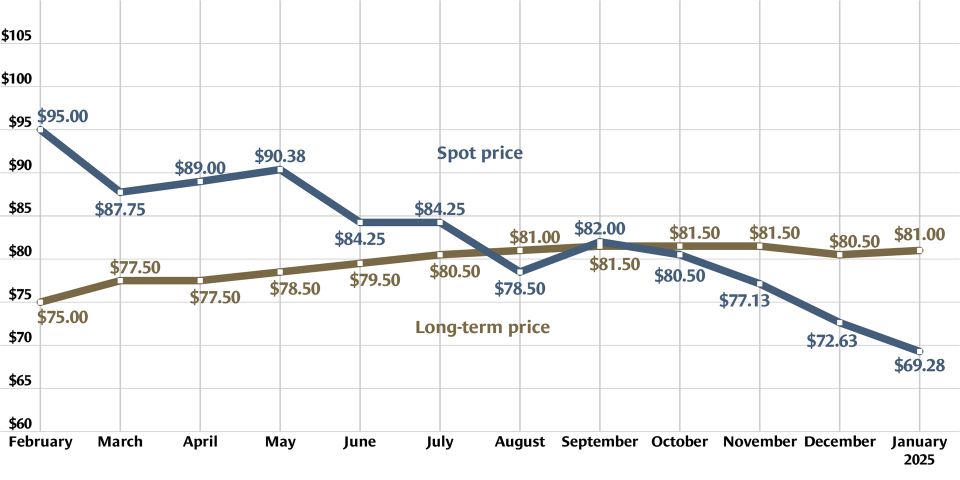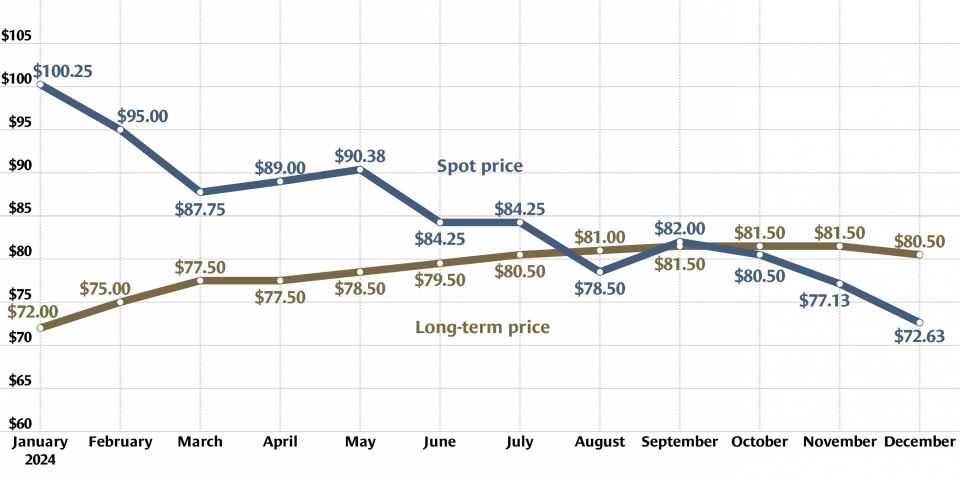The recent uranium price drops in spot pricing have been widely attributed in part to policies of the Trump administration, which have contributed to market uncertainty. As the Wall Street Journal reported on March 19, “Despite the Trump administration’s promise to ‘unleash commercial nuclear power,’ uranium-related investments have had a rough start to the year. Tariffs and unpredictable geopolitical moves are causing more uncertainty in the market, even if long-term fundamentals look solid.”
Russia and AI data centers: Geopolitical uncertainty is centered on Trump administration policies toward Russia. Trading Economics noted that the administration has “signaled that it aims to secure economic ties with Russia, ramping up bets that Washington may remove current sanctions against the import of Russian nuclear fuel.” Russia is estimated to own almost one-half of the global uranium conversion and enrichment capacity “against a backdrop of plentiful supply of yellowcake for Western enrichers with capacity constraints.”
Artificial intelligence data centers continue to be another factor contributing to market uncertainty, with the markets “reconsider[ing] their speculative positions on nuclear power demand for U.S. data centers following the emergence of more efficient large language models in Europe and China,” according to Trading Economics. Further questions regarding these high-energy-demand facilities were raised in February, when Microsoft reportedly canceled leases on data centers in the United States, “marking a contrast with the view that tech giants were racing to secure new power capacity.”
Forecast: Trading Economics analysts expect uranium spot pricing to continue their decline over the coming months, though at a rather slow pace. In 12 months’ time, they forecast uranium to be trading at $64.43 per pound.
